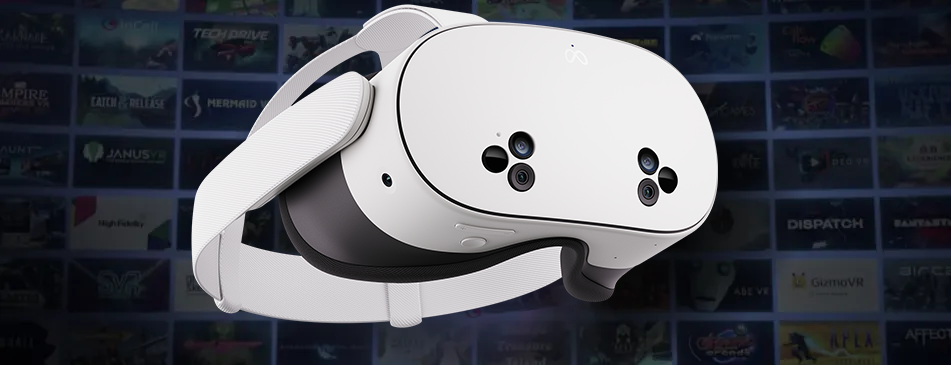It’s been known by at least two different names before (Oculus Connect, then facebook Connect), but whatever the name, Meta’s fall event is still a great showcase for the company’s latest and greatest achievements in the VR and mixed reality space. Much like last year, we can likely predict the biggest new things coming out of Meta Connect 2024 from just two acronyms: ai and AR.
Like all big tech companies this year, Meta will be eager to show how it plans to remain relevant in an ai-driven future. And now that it’s been seven months since the launch of Apple’s Vision Pro, which came alongside a brief surge of interest in augmented reality (AR), Meta CEO Mark Zuckerberg is likely to be eager to show off his own plans for making AR a reality.
While Zuckerberg isn't as enthusiastic about the metaverse as he was when he rebranded his company, the marriage of ai and AR is one way he can still make the dream of persistent virtual worlds a reality. It may look less like… Ready Player OneBut if augmented reality glasses really do take off, they could allow Meta to control another part of our digital world. And to help achieve that, it wouldn't hurt to offer an affordable, up-to-date virtual reality headset.
With all this in mind, here are some things we hope to see at Meta Connect 2024, which kicks off virtually on September 25 and runs for two days.
Orion AR Glasses
Having reportedly scrapped an expensive next-generation mixed reality headset, which was supposed to compete with the Apple Vision Pro, Meta is focusing on a pair of augmented reality glasses, codenamed Orion, as its next innovation. As seen in the background of A photo of Mark Zuckerberg (above), and later something else confirmed by himOrion looks like a pair of thick hipster glasses.
Unlike Quest 3, which completely consumes your vision and uses cameras to show you a low-quality view of the world, Orion could let you see the real world like a regular pair of glasses. But, like Magic Leap and Microsoft’s HoloLens before it, Meta’s glasses could overlay holographic images on top of your reality. The key difference, of course, is that it appears to be much less cumbersome than those devices.
“I think glasses are going to be a big game changer,” Zuckerberg said in a Interview on the Blueprint podcast (through Road to VR). “We are almost ready to start showing the prototype version of the complete holographic glasses. We will not sell them on a large scale; we will focus on manufacturing the complete version for the consumer rather than selling the prototype.”
At Meta Connect 2022, Zuckerberg showed how the company was thinking about AR glasses, along with an intriguing wrist-based controller:
“It's probably our most exciting prototype we've had to date,” said Andrew Bosworth, Meta's chief technology officer. ai-ar-glasses” rel=”nofollow noopener” target=”_blank” data-ylk=”slk:told The Verge;cpos:8;pos:1;elm:context_link;itc:0;sec:content-canvas” class=”link “>said The edge Last year, I would get in trouble if I said this: I think it could be the most advanced piece of technology on the planet in its field. In the field of consumer electronics, it could be the most advanced thing we've ever produced as a species.
According to a leaked roadmap from Meta, the company plans to release a new pair of Ray-Ban smart glasses next year that would add a small built-in display alongside its existing camera, speaker, and microphone. That would be followed by Meta’s first pair of consumer AR glasses in 2027. It makes sense that we’ll see some sort of concept device this year. Much like Apple’s Vision Pro was effectively that company’s take on an AR/VR concept car to introduce developers to its notion of “spatial computing,” Meta will need to give developers a way to use its platform so they can build their own AR experiences.

A cheaper variant of Quest 3
Instead of an upgraded headset, all signs point to Meta releasing a stripped-down version of the Quest 3 called the Quest 3S. information From Bloomberg Mark Gurman. Recent Leaked Images Meta’s own Quest Link app has confirmed the headset’s existence. According to Gurman, the company intends for it to be much cheaper than the current version, considering prices of $300 or $400, but still offer an experience close to that of the Quest 3. It could replace the Quest 2, which remains in the product line at $299 long after its launch in 2020.
So why would Meta do this? There is a huge performance gap between Quest 3 and Quest 2, making life difficult for developers. With a cheaper device that is similar to Quest 3, potentially using the same processor, it would be easier to create games that can scale across two price ranges. According to From Bloomberg Gurman, Meta has also considered releasing some models of the new headphones without any controllers included, which would further lower the price.
More ai, of course
Meta will show off even more ways it leverages ai in its Quest headset and Ray-Ban smart glasses. The company launched multimodal ai search capabilities in those glasses in January, which allowed you to ask Meta’s ai about objects or landmarks you were looking at, or ask for a quick translation. However, based on our testing, those features were surprisingly underdeveloped.
Meta will likely discuss ways in which it is improving those existing features by implementing its Large Llama Language Model 3.1 (LLM), which is positioning itself as an open-source competitor to Google’s LLMs and OpenAI. In particular, the company notes that Llama 3.1 offers drastically improved translation, math, and general knowledge capabilities. There’s certainly room for Meta to introduce new ai capabilities powered by Llama 3.1 into Ray-Ban smart glasses, but given their limited processing power and battery life, we’ll likely have to wait for an updated model before we see anything truly groundbreaking.
Karissa Bell contributed to this report.






